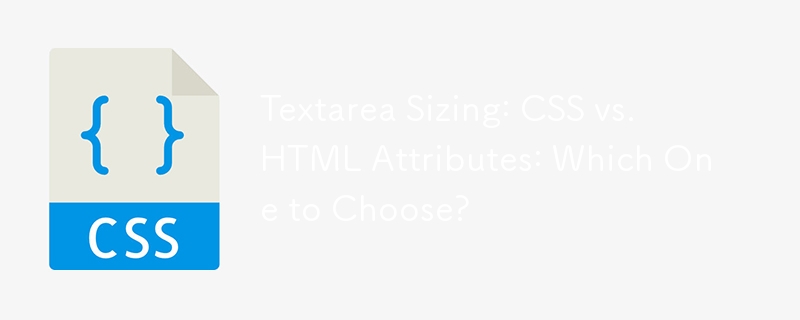
How to Size a Textarea: CSS vs. HTML Attributes
When developing forms with textareas, the question arises: should we use CSS properties or HTML attributes (cols and rows) to define their dimensions? Each method has its advantages and disadvantages, which we'll explore here.
CSS Properties: width and height
Pros:
- Precise control over the textarea's size in pixels.
- Convenient for responsive layouts where the textarea needs to adapt dynamically.
- Easier to style the textarea consistently across different browsers.
Cons:
- May not be supported in older browsers that don't support CSS.
- Can override the user's browser preferences for textarea size.
HTML Attributes: cols and rows
Pros:
- Required for accessibility and usability, ensuring the textarea is visible in text-only browsers.
- Controls the number of columns and rows, providing a consistent visual appearance.
- Can be used to specify a minimum textarea size, giving users more flexibility.
Cons:
- Less precise control over the exact size, as it depends on the font and CSS styles.
- Not as convenient for responsive layouts.
- May not be as visually consistent as using CSS.
Recommended Approach
The best practice is to use both CSS and HTML attributes for the most comprehensive sizing solution.
<code class="css">textarea {
width: 300px;
height: 150px;
}</code>Copy after login
<code class="html"><textarea cols="30" rows="10"></textarea></code>
Copy after login
This approach ensures compatibility with older browsers while giving you precise control over the textarea's size and appearance.
The above is the detailed content of Textarea Sizing: CSS vs. HTML Attributes: Which One to Choose?. For more information, please follow other related articles on the PHP Chinese website!






